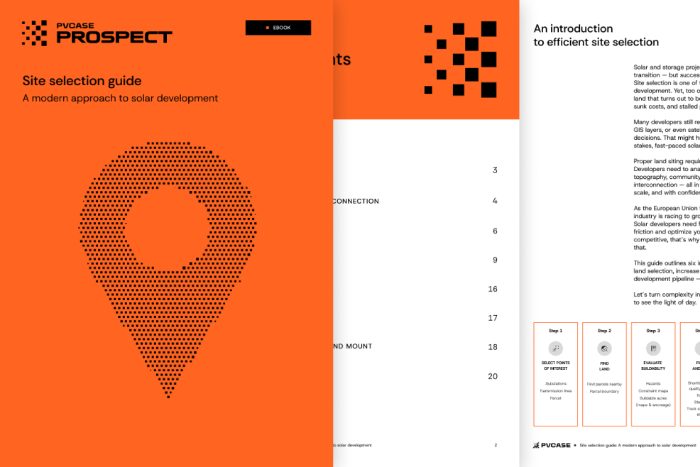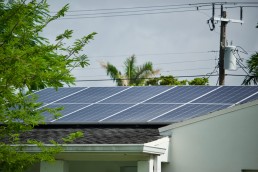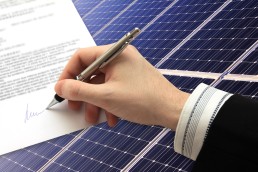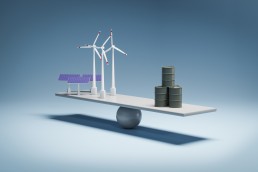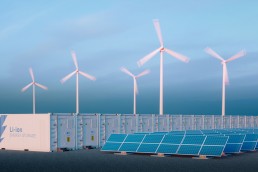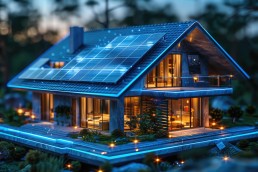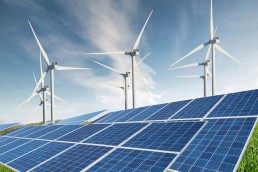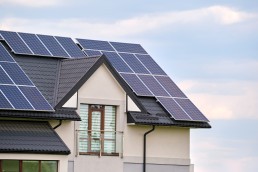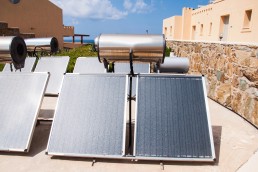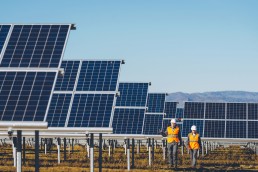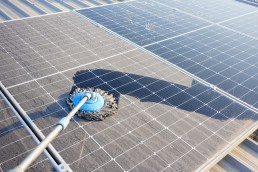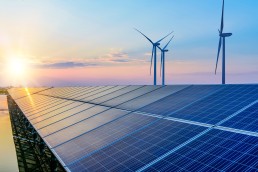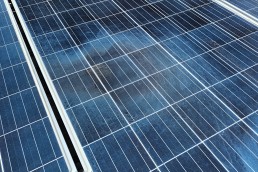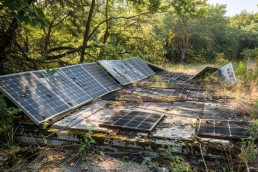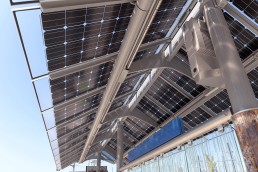Outline of the problem
It’s not a secret that PV designers have to consider the long-term costs of all components in the PV installation. Everything from groundwork to cabling and even shading has to be considered before the work starts because any alterations to a large-scale project will cost both time and money. Additionally, there’s the problem of upkeep; if the various components of the PV park are not considered beforehand, the maintenance costs could rise exponentially, making expenses outweigh any possible savings. But with sufficient energy production as the goal of any PV system, one of the important elements of a PV project is the solar trackers. Essentially, they can affect the overall efficiency of the park by tracking the sun’s movements, which increases the energy yield.
What are solar trackers?
- Single-axis
As the name suggests, single-axis trackers move on one axis only; it can be east-west or north-south oriented. The trackers are usually automated, meaning the tracker has a structure in place that moves the panel based on the sun’s direction, ensuring prolonged exposure to direct sunlight. In general, a single-axis tracking system could be about 20% more efficient than a fixed-tilt system. Single-axis trackers can be decentralized or centralized. Decentralized trackers work on a single PV module, while centralized ones can move the entire row. Single-axis trackers are commonly used in large-scale projects such as PV parks.
- Dual-axis
Dual trackers do much of the same as the single-axis ones, but they have one additional axis they can move on. This ensures the panel is always facing the sun, regardless of the direction it’s coming from. It’s worth noting that dual-axis trackers are more expensive than single-axis. However, looking at a long-term investment, dual-axis trackers ensure the PV system produces more energy than other types of trackers. Dual-axis trackers are usually used in smaller-scale projects due to installation and maintenance costs; they also have a shorter lifespan than single-axis trackers.
When to consider solar trackers?
- Limited space
If the PV project needs to be designed with limited space in mind, solar trackers could increase the efficiency and yield without requiring extensive alterations. For example, if the park relies only on a fixed-tilt system, it will need more space, and more groundwork, to place the modules to match the output of the one with solar trackers that can capitalize on the prolonged exposure to the sun.
- Costs
When it comes to solar trackers, you need to consider short-term and long-term expenses and income. Panels with solar tracking will cost more than a fixed-tilt system both in terms of initial purchase and maintenance. However, they will generate more energy, which can outweigh the introductory costs.
- Obstructions
Solar trackers can counter the shading issue, especially in locations where it’s impossible to remove the source of the shade. Trackers increase the efficiency of solar panels even in areas that are often cloudy.
Advantages of solar trackers
Solar trackers fully utilize the sun peak hours and, in turn, increase the efficiency of the PV project. Trackers can overcome the shading problem and help to better utilize the land, which all adds to increased yield.
Trackers can make solar energy viable in locations that otherwise would be poorly suited for it. PV projects with solar trackers need fewer panels to be efficient and are more reliable compared to fixed-tilt.
Disadvantages of solar trackers
Trackers are expensive. When designing a project, you need to consider if the subsequent yield will pay for the initial costs.
Not all projects can support the trackers. For example, residential PV systems will not benefit from the trackers as much as solar parks.
Maintenance of solar trackers costs more than that of a regular system. According to experts, trackers are especially susceptible to weather conditions, so the climate of the locale for the PV project can become a limiting factor.
When to consider fixed-tilt systems?
While solar tracking can increase the efficiency of a PV system, it’s not always viable. For instance, if the locale of the PV project is on undulating terrain, specialists need to evaluate the geotechnical conditions and decide if the project would benefit from the trackers or if the fixed-tilt is a better fit. The same goes when the site is on steep slopes, there’s limited space for panel movement, or when there are obstacles that cannot be removed. A mix of fixed tilt and tracker systems could provide a solution, but overall, any PV project needs to be inspected individually to determine which system to use.
Conclusion: which trackers should you choose?
When deciding what system to use, you should consider variables that are unique to your project. Solar trackers are more susceptible to weather-related events, which increases the maintenance costs, so they work best in regions with sufficient irradiation; and while the same goes for fixed-tilt, the tracker system can be more efficient with less land availability. On the other hand, in locales that are cloudy, fixed-tilt systems might be less efficient than trackers because they maximize energy production.
Overall project costs also need to be considered. Trackers are expensive, dual-axis ones even more so, but if the PV project can financially benefit from the increased energy generation long-term, it might be a worthwhile investment. Alternatively, if you’re designing a smaller scale project, fixed-tilt might be a better fit, as it has lower construction and maintenance costs.
How can PVcase help
With PVcase Ground Mount, you can design a project with both fixed-tilt and single-axis tracker systems. The automated features assist with the placement of the trackers, their alignment, and the calculations involved, so the designers have a clear view of the park’s potential performance. To further increase efficiency, with PVcase Ground Mount you can change the azimuth for the tracker layouts on single-axis and fixed-tilt systems. The software automation also covers additional elements, such as the placement of inverters, to ensure the efficiency of the PV park. Regardless if you’re working with fixed-tilt or trackers, PVcase Ground Mount can aid with the cabling, stringing, shading, or any other.
And if you’re looking for a site for the most effective project execustion, Anderson Optimization by PVcase got you covered.
You might also be interested in:
October 10, 2024
Net energy metering: how does it work and what are the benefits?
Learn about net metering, how it works and its benefits for renewable energy users and the grid.
October 9, 2024
Solar lease vs. buy: which is better?
Explore the benefits and drawbacks of leasing or owning solar panels to determine the best option for your renewable energy needs.
October 8, 2024
Solar energy vs. fossil fuels: what’s the difference?
Want to understand the differences between solar energy and fossil fuels? Explore the pros and cons, including their environmental impacts and financial considerations.
October 7, 2024
Is solar power truly renewable or nonrenewable?
Discover whether solar energy is considered renewable or nonrenewable and explore the benefits of solar power for a sustainable future.
October 6, 2024
Understanding on-grid solar systems. Powering homes and businesses
Find out how grid-tied solar systems work, their advantages and why they're popular for homeowners and businesses looking to harness solar energy efficiently.
October 4, 2024
Solar energy vs. wind energy. Pros and cons
Discover whether solar energy is considered renewable or nonrenewable and explore the benefits of solar power for a sustainable future.
October 3, 2024
Achieving household energy independence
Discover how energy independence through solar power can benefit your household, reduce costs, and contribute to a sustainable future.
October 2, 2024
Solar powered water heaters. A comprehensive guide to their value and efficiency
Many people in rural areas have difficulty accessing financial services, a problem exacerbated by energy insecurity. Solar power can help protect rural communities from energy…
October 1, 2024
Separating solar energy facts from fiction
Explore common solar energy myths and facts. Learn the truth about the efficiency, costs, and environmental impact of solar power in this guide.
September 30, 2024
Essential solar panel maintenance for peak performance
Learn key strategies for solar panel upkeep, from regular cleaning to performance monitoring. Maximize efficiency and extend system life.
September 27, 2024
Understanding smart power grid technology
Discover how smart grids modernize power systems, enhance efficiency and integrate renewable energy sources for a sustainable future.
September 26, 2024
Why do solar panels degrade?
How and why do solar panels degrade? Explore the factors contributing to their lifespan and what measures to take to extend it.
September 25, 2024
Solar panel and battery recycling
Learn effective techniques for recycling solar panels and batteries. Discover sustainable practices, legal requirements, and the environmental impact of proper disposal methods.
September 24, 2024
Will urban air transportation become widely available?
Learn about the latest innovations and practices that can further improve the sustainability of climate-resilient crops, benefiting both farmers and the environment.
September 23, 2024
Emerging innovations in unmanned systems
Unmanned systems can perform various tasks without the hands-on operation of a human, although they’re often operated remotely. These systems are increasingly being used in…

